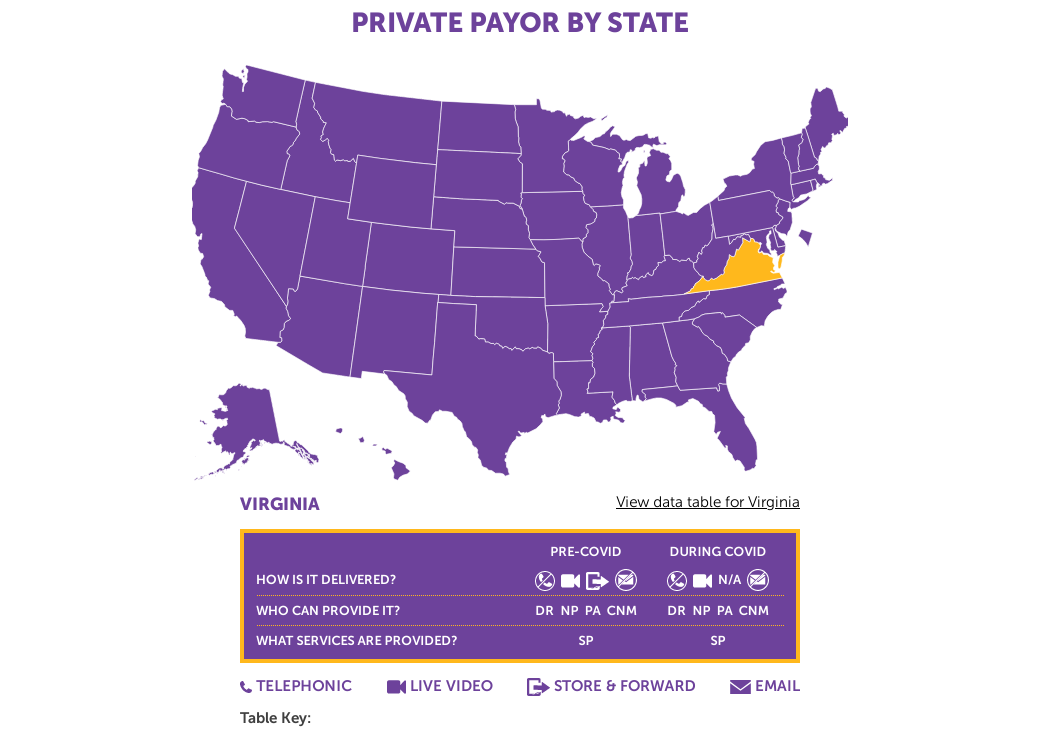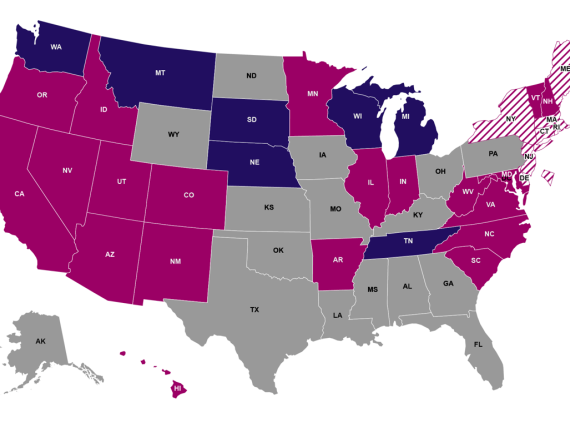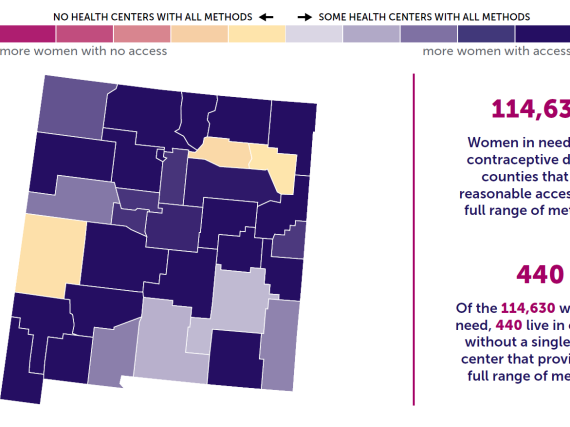State Telehealth Policies Relevant to Contraception FAQs, Key Terms, and Table Key
The purpose of our maps and tables is to synthesize state-level telehealth reimbursement policies, with a focus on policies that facilitate contraceptive access. We researched and interpreted these policies using data from the Center for Connected Health Policy, as well as state executive orders and regulations, to create this resource for elected officials and advocates who want to advance telehealth policies, as well as for folks who want or need to use telehealth to obtain contraception and need to know their options.
Frequently asked questions include: What do these tables tell us about reimbursement?; How should I interpret the N/As?; Why did policies change during COVID?; How long will the “during COVID” policies stay in place?; and Does telehealth increase access to health care for everyone?



